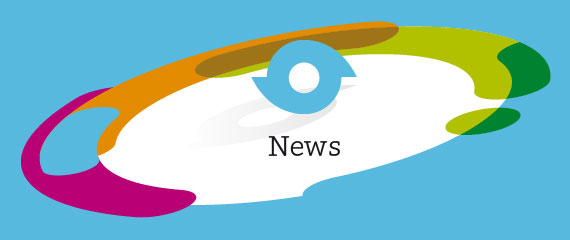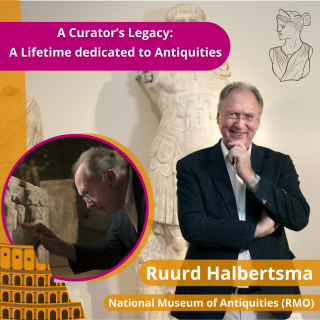Meet the Expert: Ruurd Halbertsma
Aside from his teaching duties, Prof. dr. Ruurd Halbertsma is the curator for the Greek, Roman, and Etruscan collections of the National Museum of Antiquities in Leiden (Rijksmuseum van Oudheden, RMO). He will retire next year after more than 35 years of service, let’s take a look back at his career and future plans.
It all started at school: early on, stories from the ancient world fascinated him and he decided to pursue this interest by studying Classical Languages and Classical Archaeology at Leiden University. While studying Archaeology, he interned at the RMO and delved into its archives and uncatalogued collections. This search yielded a dissertation on the collector Alfred van der Toorn for his master’s degree and on the Dutch archaeologist Jean Emile Humbert for his PhD. By 1988 he was appointed curator at the same museum and amongst other projects, has been organising various exhibitions for over 35 years. What he enjoys most however, is the enormous variety of tasks and people he comes into contact with: from identifying suspicious imports at border control to meetings with the Italian ambassador.
When asked which exhibition makes him the most proud, he refers to his latest one: Paestum. City of Goddesses (with a podcast!). The site has a special place in his heart: aside from being a yearly excursion for the students of Classical Languages, the city of Paestum and its surroundings show that the ancient world was more diverse and cosmopolitan than one would imagine: a true melting pot of influences and testament to a multicultural society. This is not a coincidence: highlighting diversity and intercultural exchange in the Roman Empire has been the red thread throughout the body of his work.
What he could not include in his academic work, he puts into his adventurous novels for a broader audience. The two first books of his trilogy, titled “Roofkunst” (“looted art”) and “Sluikwaar” (“illicit goods”), not only provide readers with a thrilling story and touch upon broad societal movements and debates, they also tackle issues related to the field: how has the role of curator changed, how to deal with collection items with a compromised origin amongst others. Halbertsma has firsthand experience with both. He summarizes that his curator role expanded from being an expert found in his office and the archive to being a spokesperson for his field that comes in contact with a broad array of actors. Moreover, his first acquisition for the RMO turned out to have come through a reseller of stolen goods down the selling process! Halbertsma chose for restitution and this show of goodwill turned out to be a win-win and the cornerstone for future exhibitions.
The first two books of his trilogy have been published, the third one is in process and is expected to come out after his latest exhibition. For the future, Halbertsma looks forward to promoting this exhibition, showing his successor the ropes, write the end to his trilogy, and enjoy life in general (and ten times a day think about the Roman Empire) – quite the schedule!
Interview by LeidenGlobal intern Florence Bellemont
June 2024
Have a look at our other experts on the Expert Page

